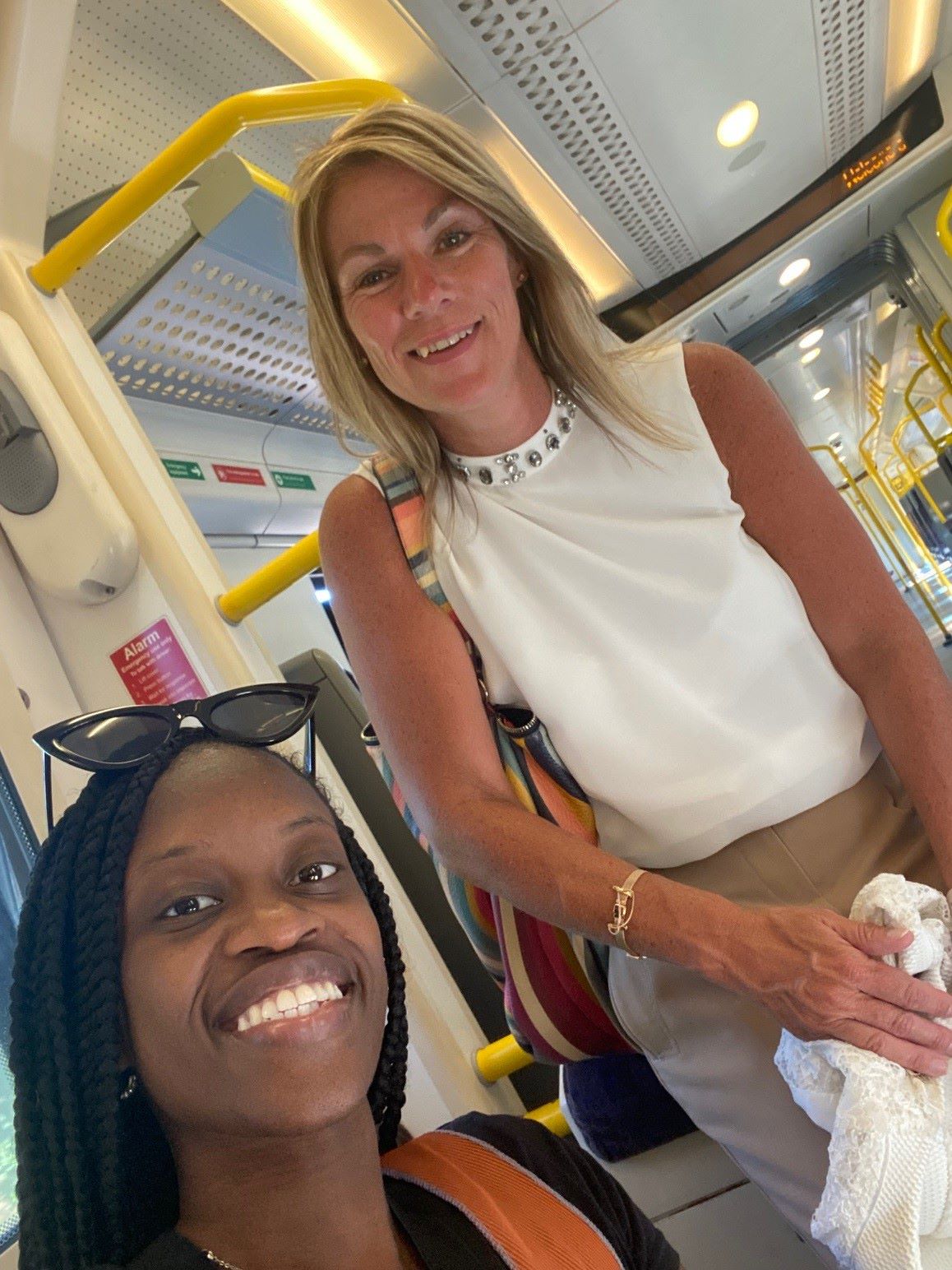Learning from our customers to deliver an inclusive railway for everyone

By Jac Starr, CEO, Rail Delivery Group
Ever since joining RDG in 2015 as Managing Director of Customer Experience, I have always aimed to ensure that we put customers at the heart of everything we do. With the rail industry being at a critical moment in its recent history, reform is needed to improve its offer to customers. The single most important thing to me as CEO is what the industry is doing to influence better customer outcomes.
That is why I’m always eager to hear from as many customers as possible, to learn about their experiences and get a better understanding of what we need to do to make things better.
In the summer, I was pleased to have the opportunity to travel the network with Hannah from Whizz-Kidz, the UK’s leading charity for young wheelchair users. We travelled from Lee Station in South-East London to Earls Court, and I was able to hear directly from Hannah about some of the challenges she faces on a daily basis.
Hannah is a wheelchair user and prior to our journey together she booked assistance via the ‘Passenger Assistance’ app. As a reminder, the smartphone app developed by Transreport was launched by the industry in May 2021 to make it easier and quicker for disabled people to request assistance for their train journey so that they can travel with confidence.
I was pleased to see that the train employee looked out for Hannah’s arrival and asked her which train carriage she would like to travel on. Hannah requested the middle knowing that this would take her closer to the lift at London Bridge (where we needed to change) and was grateful to be asked, telling me that she often isn’t and subsequently gets placed next to the toilets or somewhere more congested.
At London Bridge we got the lift and Hannah explained how, more often than not, people who don’t need it choose to use the lift instead of giving priority to people who depend on it.
My time with Hannah was a mere snapshot of all journeys made by disabled people on our railways. And when you consider them travelling across the network during peak hours, or late at night, you start to recognise some of the barriers our disabled customers can face.
It is our vision to have an inclusive railway that is easy to use and accessible to all. To date, RDG, together with train operators and Network Rail, has made significant improvements in delivering a simpler, better railway for everyone in Britain.
As I mentioned earlier, last year, we launched ‘Passenger Assistance’, which is offered alongside the previously existing phone and email forms. Earlier this month, I welcomed the launch of the ‘Passenger Assistance’ web app, which provides customers with an additional way to request assistance and is delivered against the backdrop of our longer-term vision to improve assistance provision across the rail network.
We have also reduced the booking window so that customers can request assistance up to two hours before they are scheduled to travel, any time of the day and for any rail journey. This is down from six hours previously, and critically includes the first train of the day.
The launch of the app has been part of our overall mission to continually improve the experience of all our customers. To ensure that operators are increasingly well supported to deliver assistance, the two-year ‘Passenger Assist Phase 4 Roadmap’ has been developed based on extensive stakeholder insights and should be delivered by the end of 2023.
While this demonstrates important progress in achieving a step-change in customer experience, we cannot stop here. In line with our vision, our goal is to ensure that thinking about accessibility and inclusion is truly embedded across the entire rail industry and being given priority within the general decision-making process.
The 2010 Equality Act which sets out requirements to stop discrimination against a range of protected characteristics, has placed particular emphasis on public bodies to ensure they do not discriminate (the ‘Public Sector Equality Duty’). But while it’s the law, it’s also just the right thing to do.
There is more to be done to ensure our railways are fully accessible and inclusive, but I hope the improvements and new initiatives we have launched will enable more people to have a better experience. My journey with Hannah was a valuable reminder of the challenges that disabled customers face every day, and I want to ensure we continue to learn and improve across the rail industry, now and in the future.